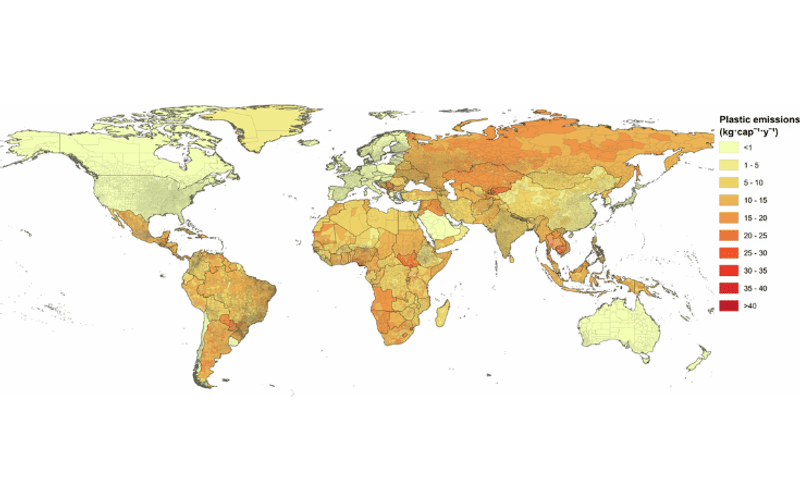India's role in global plastic pollution: A growing crisis
India is rapidly emerging as a significant contributor to global plastic pollution. According to a recent study published in Nature, India is responsible for approximately 9.3-million tonnes of plastic waste every year, which accounts for nearly a fifth of global plastic pollution. This statistic underscores the magnitude of the plastic crisis in India, which continues to affect land, air, and water.
25 Mar 2025 | By Anhata Rooprai
In India, uncollected waste contributes to nearly 53% of the country’s total plastic emissions. Despite official reports suggesting that 95% of the country’s waste is collected, the reality is far more complex. Large swathes of rural areas and informal sectors remain outside the purview of formal waste management systems, leaving plastic waste to accumulate in open dumpsites or even on the streets. This waste often becomes a source of pollution as it is blown across land or washed into water bodies, causing severe environmental damage.
Another significant contributor to India’s plastic emissions is the widespread practice of open burning. The study found that around 38% of India’s plastic waste emissions result from plastic being burned on dumpsites. Open burning of plastic is not only a major environmental hazard but also a serious health risk, as it releases toxic chemicals into the air, harming both humans and wildlife.
India's challenges in waste management
India's plastic pollution crisis is further exacerbated by its waste management infrastructure, which is often inadequate in handling the country’s growing urban population. Although urban areas in India generate a significant amount of waste, it is the rural and informal areas that are most affected by uncollected and poorly managed plastic waste.
The study highlights that the collection coverage in India is about 81%, far below the official figure of 95%. The discrepancies in waste management statistics are partly due to the informal sector, which handles a significant portion of plastic recycling and waste management outside of the formal system. This means that a large volume of plastic waste is neither collected nor recycled, contributing to the country’s mounting pollution problem. Uncollected waste is the largest contributor to plastic pollution in the Global South, accounting for 68% of plastic waste emissions.
WhatPackaging? readers will recall a survey of over 130 India-based respondents in the January issue. The survey revealed significant gaps in awareness regarding plastic types and recyclability. While some respondents showed awareness of recycling, a large portion struggled to identify different plastics, with only 28.4% able to distinguish them.
Higher-income groups generally exhibited better knowledge, although gaps persisted. The survey highlighted the need for enhanced education, particularly in wealthier areas, to address India's growing waste management crisis. Challenges in waste management include inadequate infrastructure and weak enforcement of regulations like the Plastic Waste Management Rules. Improved awareness and better waste segregation are crucial to tackling the problem.
The economic and environmental impact
The environmental impact of plastic pollution in India is devastating. The country’s rivers, beaches, and landfills are overwhelmed with plastic waste, which often ends up in the oceans, further compounding the global plastic pollution crisis. India's contribution to marine plastic pollution is particularly concerning, as plastic debris from the country’s rivers is swept into the sea, affecting marine life and ecosystems.
Additionally, the economic costs associated with plastic pollution are significant. Plastic waste clogs waterways, disrupts transportation systems, damages crops, and negatively impacts tourism, costing India billions annually. The long-term effects on public health, caused by the burning of plastic and exposure to toxic chemicals, add further strain on the healthcare system.
This story is based on Joshua W Cottom, Ed Cook, and Costas A Velis’ A local-to-global emissions inventory of macroplastic pollution, which was published in the British scientific journal, Nature, in September 2024.


